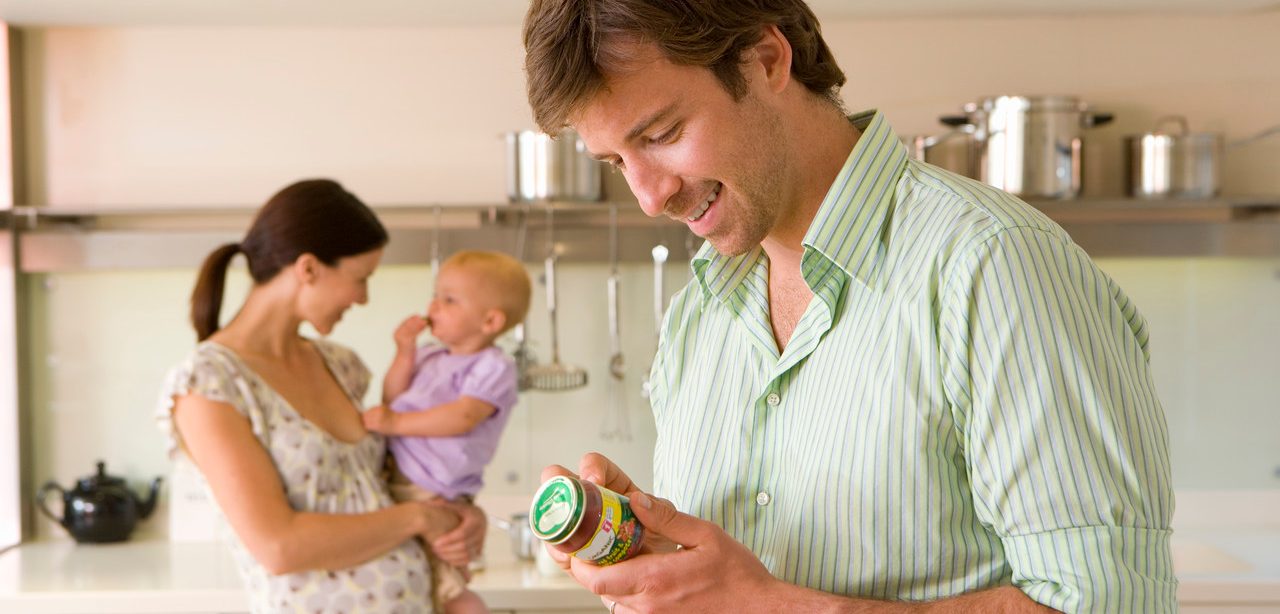How to Make Your Own Baby Food

Store-bought food isn't good for your baby. Added sugar and salt and nutrients lost during food processing make DIY appealing. Here’s how to make your own baby food.
Like most moms and dads, you probably feed your infant or toddler with store-bought food once she’s done breastfeeding. It’s a familiar habit that’s quick and easy. Americans have done it for generations.
Just like the rest of us, however, small children don’t thrive on food packed with extra sugar and salt. In one study, researchers found that babies and toddlers fed primarily on formula consumed nearly twice the energy from added sugars and gained weight faster than children who were breastfed — setting them up for obesity. Another study found that children who breastfeed for more than a year are less likely to become overweight later in life.
YOU MIGHT ALSO LIKE: Help Your Child Beat Obesity Trends in America
In a study of more than 3,200 U.S. children younger than four years old, researchers found that many toddlers and preschoolers had diets low in fiber and key vitamins but high in salt and added sugar, mainly because they ate too much processed meat, sweet baked goods, and sweetened drinks.
“It is important for the baby to start off knowing the actual taste of the food and appreciate it for its natural taste,” says Robyn Felten, clinical nutrition manager at La Rabida Children’s Hospital in Park Forest, Ill. “Plus, more and more research is coming out on the dangers of added sugar, as more and more children get diseases that were once only heard of in adults, such as type 2 diabetes, fatty liver disease, hypertension, and heart disease.”
Look at food labels
It’s important to look carefully at labels when buying commercial toddler foods. An analysis of the nutrients in more than a thousand U.S. infant and toddler commercial foods found that 72 percent of the toddler dinners were high in salt. A third were high in added sugar. Cereal bars, snacks, desserts, and juices were also too high in sugar.
The result? More than 13 percent of U.S. 2- to 5-year-olds are obese, according to the Centers for Disease Control and Prevention (CDC). Obesity plus high salt intake has been linked to high blood pressure among children, just as with adults.
There has been an increase of nearly 5 percent a year in new type 2 diabetes cases among Americans younger than 20, the CDC reports. Type 2 diabetes was once referred to as adult-onset diabetes, but it is now frequently diagnosed in adolescents.
How to make your own baby food
The Academy of Nutrition and Dietetics offers instructions for baby food along with other kid-friendly recipes.
- You might start by mashing a very ripe avocado or banana.
- You can move on to nutritious foods that aren’t common in supermarkets: beets, broccoli, turnips, asparagus, spinach, blueberries, Kale, mango, or papaya.
- Serve one new ingredient at a time and make it soft.
- To retain vitamins and minerals, cook vegetables in a microwave with a small amount of water.
- Puree or mash fresh fruit or fruit canned in its own juice. Do not add honey or sweeteners. You can thin pureed foods by adding breast milk, formula, or water.
- Cook eggs and meats until they’re well done, as babies are especially susceptible to food poisoning.
- You can freeze homemade baby food in small portions in an ice cube tray. You can put the frozen cubes into airtight freezer safe food containers.
Over the past decade, some parents have embraced an approach called “baby-led weaning” to introduce solid foods into their baby’s diet. The idea is to encourage babies to self-feed family foods at their own pace instead of you feeding them store-bought baby foods. The theory is that this method promotes healthy eating behavior and weight-gain benchmark trajectories.
As your child grows, remember that they’ll need to eat more fruits and veggies than in the standard U.S diet. Aim to fill half a plate with these foods at each meal. Stick to whole grains like brown rice you prepare yourself. Mix up proteins; kids can learn to enjoy seafood, beans, lentils, nuts, and eggs, if they start young.
This is a lot to take in. If you need to boil it down, think about what your infant or toddler is eating now, read food labels, try to avoid foods that will instill a craving for sugar and salt later, and consider making your own baby food. It takes more time, but it’s an investment in your children.
Updated:
April 12, 2022
Reviewed By:
Janet O’Dell, RN